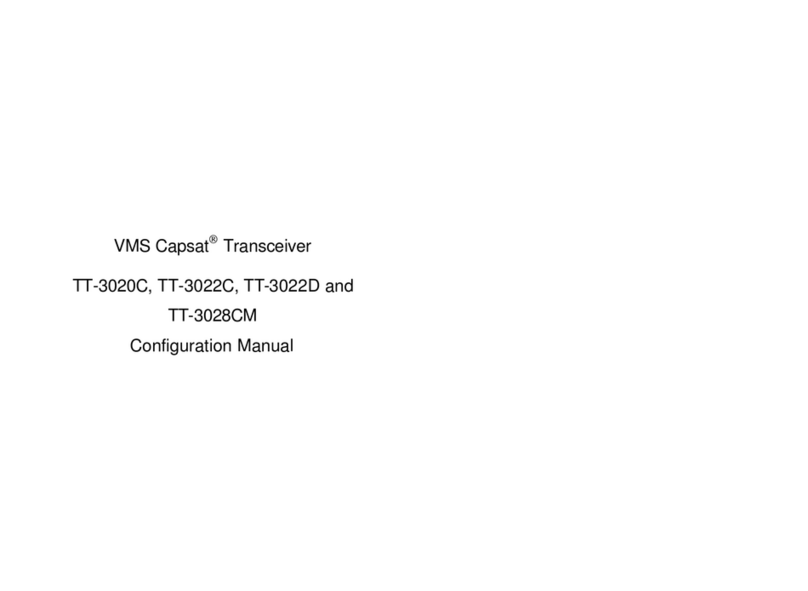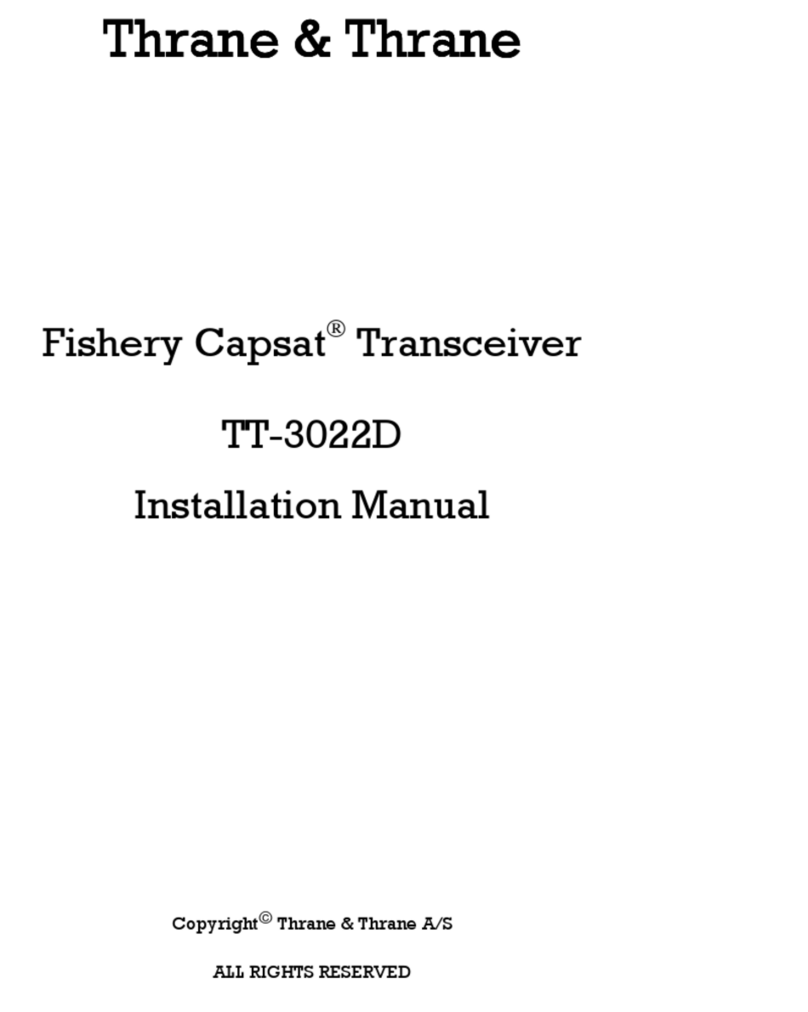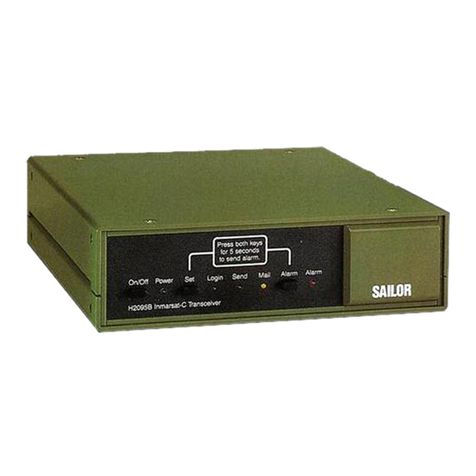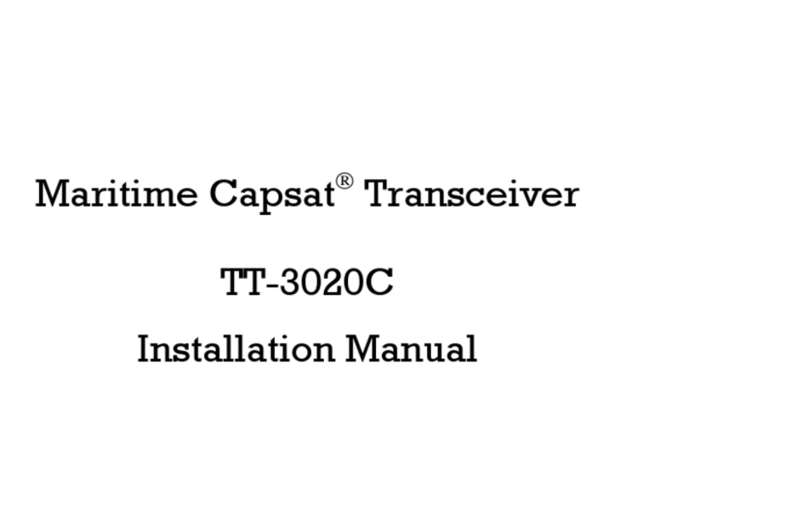Thrane & Thrane
TT-3020B Capsat Transceiver
Technical Reference Manual
Page ii 19JUN95
5.3 Status information 21
6. Using a Reader/Puncher in the Capsat system 22
6.1 Introduction 22
6.2 Connections and setup 22
6.3 TT-1610A High speed Reader/Puncher 22
6.4 Receiving and punching messages 24
6.4.1 Setup of reception 24
6.4.2 Punching paper tape messages 25
6.4.3 Punching tapes in binary mode 25
6.5 Reading and transmitting messages 26
6.5.1 Reading paper tape messages 26
6.5.2 Reading tapes in binary mode 27
6.5.3 Transmitting messages 27
7. Transceiver Software Details 28
7.1 EGC Message header format 28
7.2 Provider Name Mapping 30
7.2.1 Introduction 30
7.2.2 Map technique 30
7.3 Baudot Characters 32
7.4 Use of the Transceiver built-in speaker 33
7.5 T-Bus Software Interface Description 35
7.5.1 TT-3042A and TT-3042B Remote Alarm 35
7.5.1.1 Introduction 35
7.5.1.2 Status command 36
7.5.1.3 Print command 37
7.5.1.4 Msg_info command 37
7.5.1.5 Send_nmea command 38
7.5.1.6 Position command 38
7.5.1.7 Time command 39
7.5.2 Antenna Switch 40
7.5.2.1 Introduction 40
7.5.2.2 Status Poll 40
7.5.2.3 Switch Antenna 40
8. Capsat Transceiver Service 41
8.1 Service 41
8.1.1 CPU board: TT 37-102819 41
8.1.2 Power supply: TT 37-102120 43
8.1.3 Demodulator / down converter board: TT 37-102019 44
8.1.4 Built-in GPS Module: TT 88-300421 45
8.1.4.1 Test Summary Word 45
8.2 Replacements 46
8.2.1 How to replace a CPU board: TT 37-102819 46
8.2.2 How to replace an FGU board: TT 37-100522 46
8.2.3 How to replace a demodulator board: TT 37-102019 46
8.2.4 How to replace a power supply: TT 37-102120 47
8.2.5 How to replace an antenna unit: TT 69-102881 47
8.2.6 How to replace the Built-in GPS Module: TT 88-300421 47





































